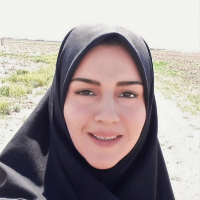Assessment of the Effects of Plant Density, Vegetation Covering and Shading on Egulation of Soil Temperature and Yield of Saffron (Crocus Sativus L.)
In order to investigate the effects of vegetation covering and shading on the economic yield of saffron (Crocus sativus L.) a split–plot experiment based on Randomized Complete Block Design (RCBD) with three replications was conducted at the Gonabad station for two cropping years (2018-2019, 2019- 2020). Experiments included main factor, density at four levels (90, 60, 120 and 150 corms per square meter) and sub-factors of crop residue management and shading at four levels (removal of saffron residues at the end of growing season as (control), presence of saffron residues at the end of the growing season, (control) + use of 2 (t.ha-1) barley straw and finally (control) + use of shading). Due to the nature of sub-factors, the data for the second year of growth were measured and analyzed. The results of analysis of variance showed that density and cover management had a significant effect (p≤0.01) on the vegetative characteristics of saffron (number, length and leaf area). However, the effect of density and the interaction effect of density × covering on vegetative traits had not significant effect. Also, the results of measured traits related to yield showed that the effect of corm density, covering management and the interaction of corm density × type of covering on number, flower weight and economic stigma yield were significant (p≤0.01). The highest amount of dry stigma yield and fresh weight of flowers with values of 5.16 and 411 (kg.ha-1), respectively, achieved from the treatment of 150 corms per square meter density and use of cereal straw covering and the lowest of these traits with values of 2.2 and 200 (kg.ha-1) was obtained from the density of 60 corms per square meter and control. Stepwise regression analysis for variables related to saffron economic yield showed that the number of flowers per unit area alone could explain 90.59% of the variation in saffron economic performance. Considering the positive effect of covering application on adjusting soil temperature compared to the maximum daily air temperature (at least 7%) and the simultaneous positive effect of this method of cropping management with induction of flowering stage in saffron, it seems that the use of different types of covering, especially cereal straw, is recommended to stabilize and improve saffron yield due to its low cost and easier access to covering saffron fields.
Flower , Green area , Mulch , Temperature , Yield
- حق عضویت دریافتی صرف حمایت از نشریات عضو و نگهداری، تکمیل و توسعه مگیران میشود.
- پرداخت حق اشتراک و دانلود مقالات اجازه بازنشر آن در سایر رسانههای چاپی و دیجیتال را به کاربر نمیدهد.



